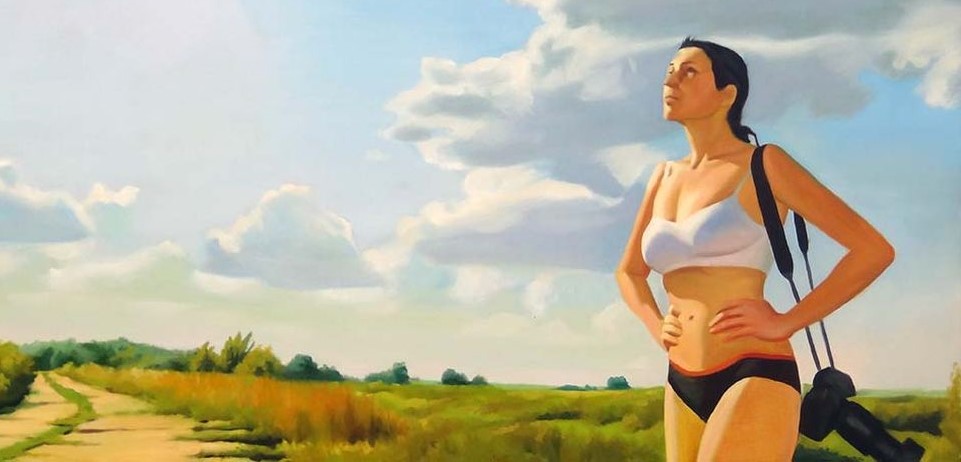
Appropriating the appropriated Vladimir Dubossarsky
In the exhibition FB Calling Vladimir Dubossarsky presents paintings based on found footage from his friends’ Facebook accounts.
FB Calling is a solo show of Vladimir Dubossarsky made in collaboration between Moscow Manege and Electromuseum in a pavilion under Vera Mukhina’s famous monument Worker and Kolkhoz Woman. Dubossarsky presents at this exhibition paintings made during last two years through the copying of found footage from his friends’ Facebook accounts. This world’s biggest social network collects personal data from all around the world for its business interest. Meaning, it softly capitalizes users. So one can see transformed photos taken by other Russian artists: most of them are about chilling out and relaxing. Happy people are swimming or enjoying the sun. Some of the pictures were extended with a title over it: on the painting showing artist Andrey Monastyrsky and his dog, one can read “a portrait of A.Monastyrsky with a dog. Absolute approaching is not working out” and a dislike sign. (Also Dubossarsky invited hip personages from Facebook, all artists, to perform during the vernissage: Vladimir Mogilevsky was standing in a museum display case asking others to join him, Vadim Kruglikov was selling books and artworks and so on.)
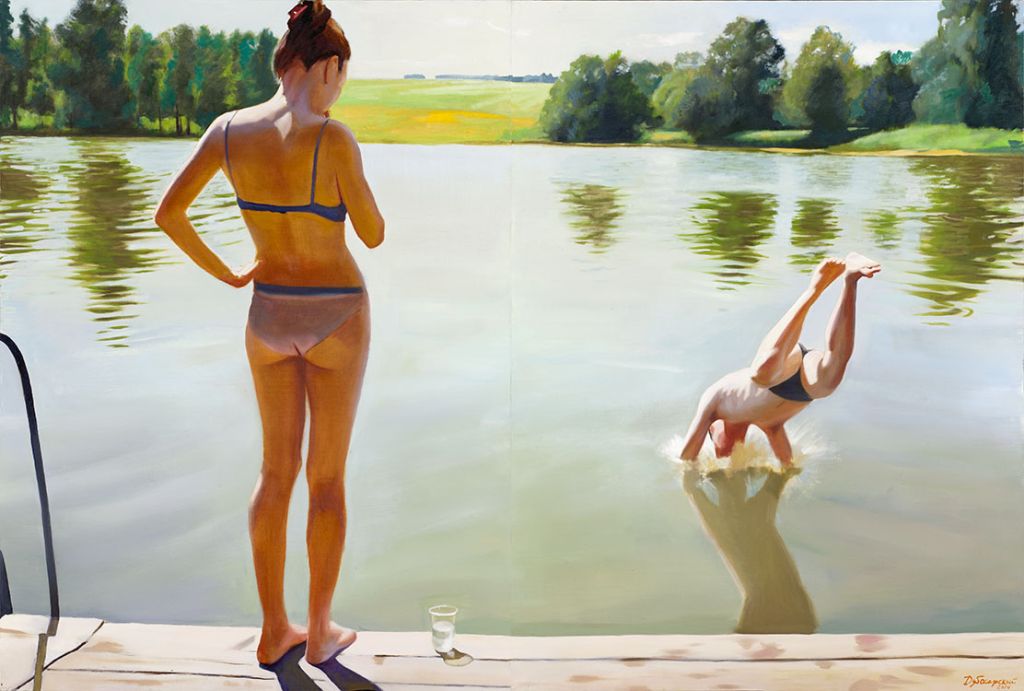

The artist, as curator of the exhibition Alexey Shulgin states, “challenges the powerful corporation by boldly appropriating the appropriated user-generated photographs and putting them on canvas by way of painting. And this is serious! Getting in his disposal the intellectual property of other users, which FB has taken hold of, the artist defies the conventional thinking and steps against the Draconian system exploiting ordinary people.”
But sometimes, as we know very well, the “defence” of personal data from transnational corporations like Facebook, Apple or Google covers another attack on it from intelligence agencies and police services with support of the governments who decides to “protect their citizens”. In China and Russia, that means the rise of political censorship and control over the internet; in the USA and the UK total surveillance. In the artistic sphere, this also takes place. When one sees an artistic way of defending or just protesting against the appropriation of data by corporations, one should be equally careful and suspicious, especially when you know that this appropriation strategy has been used by the artist for a very long time.
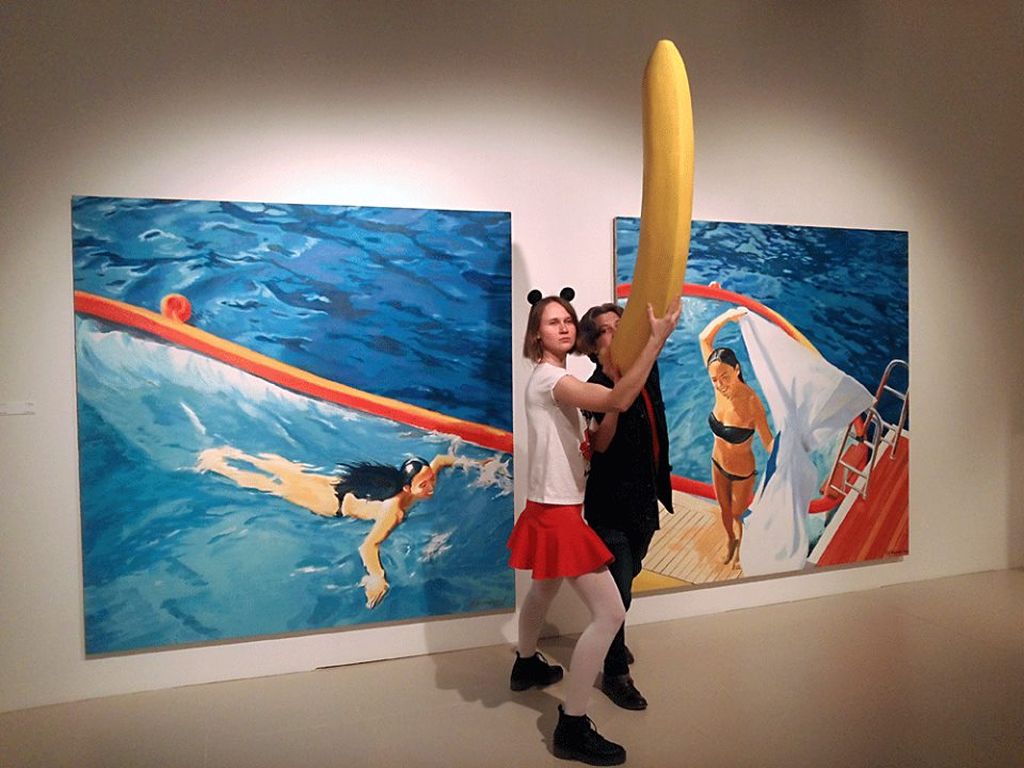

Vladimir Dubossarsky worked as a duo with Alexander Vinogradov and they became very popular artists in post-Soviet period. From the middle of the 1990s till the beginning of the 2000s, they were some of the main participants in the Moscow art scene. Their working method was quite direct but effective: revisiting Pop art strategy. They took images from mass culture or famous politicians or landmark events and transformed these into colorful paintings with a simple composition and loose technique.
In 1995 Dubossarsky and Vinogradov opened an exhibition Paintings Made to Order – in which they imitated the Socialist Realist style and mixed it with a transgressive content: Picasso instead of Stalin and Voroshilov with the Kremlin on the background (parody to the famous piece by Alexander Gerasimov; kolkhoz workers having a gang bang near a tractor; Stallone as a painter and Schwarzenegger as a model with kids et cetera.
Another artist of that period, Anatoly Osmolovsky wrote in Moscow Art Magazine in 1999: “In fact, the paintings of Vinogradov and Dubossarsky were another (no less aggressive) expression of radical art. The main thing that unified completely different radical artists was the desire to make art “simple, like bleating.” Monumental painting, the main genre selected by Dubossarsky and Vinogradov, overwhelms the viewer with its dimensions, its riot of colors, the expended labor of the creators. The discredited aesthetics of socialist realism must have shocked the art community to no less degree than some radical performance.” In 1999, after the economical crisis, the artists presented Christ in Moscow, a piece which refers to Apocalyptic visions but with elements of Bakhtin’s carnival. During the second war in Chechnya they made a painting called Inspiration (2000) where a group of soldiers fighting with an invisible enemy and dying heroically and senselessly in the open field on a sunny day.
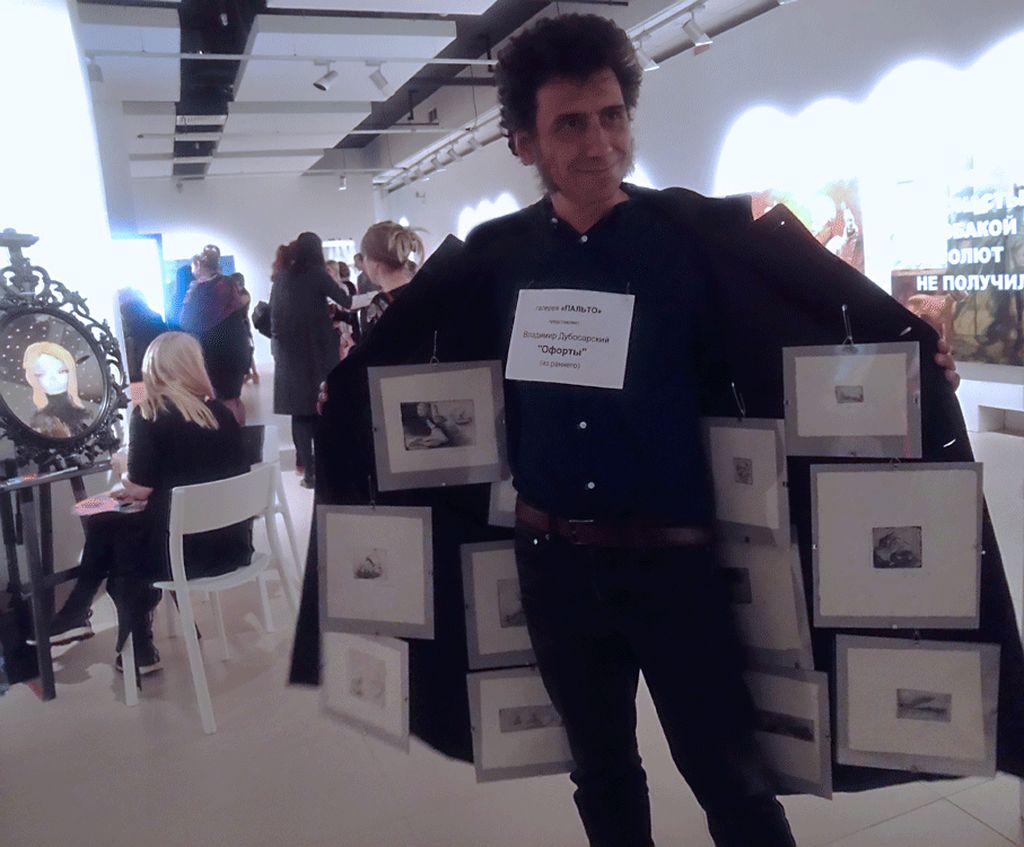
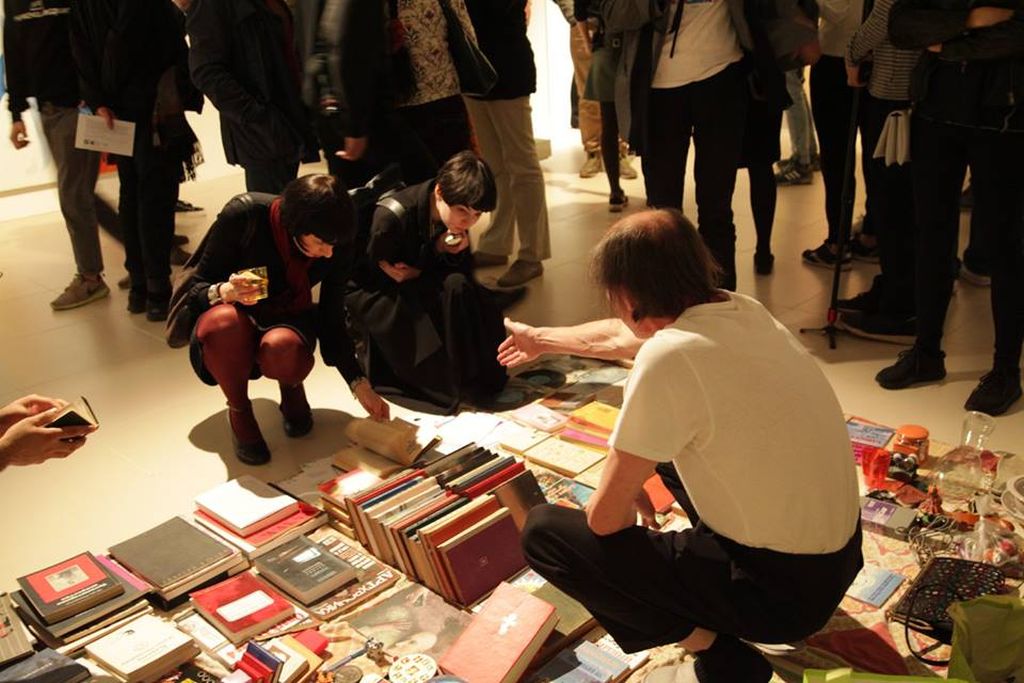
As years went by, the artists’ duo became more and more “technical” in their paintings while the topics became less and less interesting and provocative. A few years ago Vinogradov and Dubossarsky decided to continue their careers separately. Dubossarsky tried to find a new strategy in a very intensive working process: he organized an open studio exhibition in a museum, tried to make installations but, finally, went back to his personal and basic paintings and appropriations.
Sergey Guskov


